Introduction to Basic Electronic Components #4: Come Learn How to Build Basic Electronic Devices
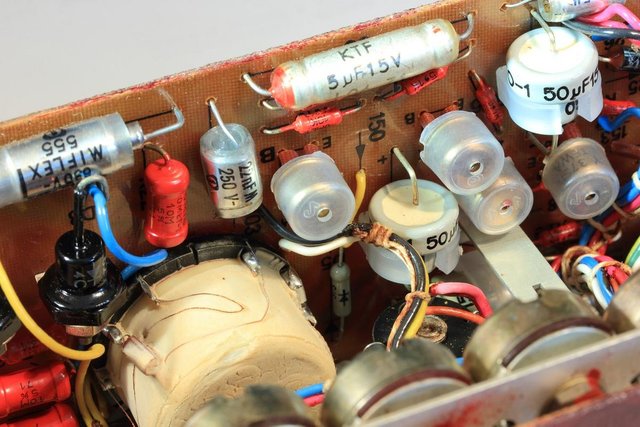
Today marks day 4 of the Introduction to Basic Electronic Component Series. We've been able to talk about the very basics, we then proceeded to talk about some electronic components - resistors and capacitors to be precise. If you missed the previous posts do check it out using the link below
Introduction to Basic Electronic Components #1
Introduction to Basic Electronic Components #2
Introduction to Basic Electronic Components #3
There is still much to look into, but as always I will be presenting them bit by bit because I don't want you to miss the key points.
I wasn't able to write a post yesterday. Reason being that there was no power supply at home. So I wasn't able to charge my phone. Yes I said it, I use my phone to create steemit posts. I have been trying to raise funds to get a good laptop I can use to create even better posts and thanks to you guys the money is coming in gradually. Enough with my problems already. Let's get back to business.
The Diode
What are diodes?
A diode is an electronic device that allows current to flow in just one direction. Diodes are polarized; meaning they have negative and positive terminals.
One can think of diodes as electronic valves. Just as valves allow air, water or any fluid to pass through them and prevent their movement in the reverse direction, diodes allow current to pass through them and prevents the flow of current in the reverse direction.

How do they look like?
Diodes look like small cylindrical objects. They are most a times black in color, with silver lining at one end. The silver lining indicates the negative part of the diode. The Image and symbol of a diode is shown below:
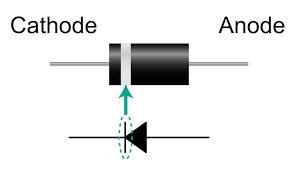
Why do we need diodes?
Diodes as defined are generally used to prevent current in the reverse direction, the use of diode is dependent on the designer. The designer would put a diode at a point where he knows that if current were to reverse in direction it would damage his device.
Diodes are most needed in the conversion of alternating current AC to direct current DC. Remember from the previous post that alternating currents changes direction, that is, the movement of current reverses with time in AC.
If a diode is connected to a circuit powered by AC it shuts the current that will try to flow in the reverse direction, allowing AC current flow in one direction. A more complex application of diodes in the conversion of AC to DC is the full-wave rectifier. Circuit diagram is shown below
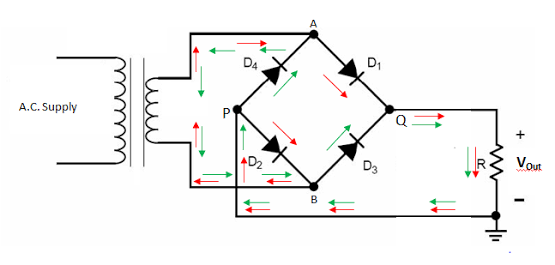
More on full wave rectification later. I don't want to dive too deep into diodes in this intro to diodes.
How do diodes function the way they do?
Diodes are made up of the p-n junction. A p-n junction is brought about when a p-type semiconductor is alloyed with an n-type semiconductor. At the p-n junction a barrier potential exists; which is the major reason behind the rectification behavior of a diode.
When a diode is forward bias, that is, the positive terminal of the battery is connected positive leg of the diode and the negative terminal of the battery is connected to the negative leg of the diode, the potential difference across the diode developed by the battery eliminates the barrier potential, causing current to flow through the diode. That is why current flows when a diode is forward biased
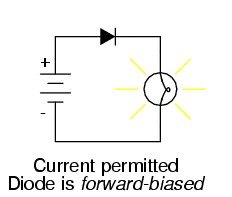
Whereas when the diode is reversed bias, that is, the negative terminal of the battery is connected to the positive leg of the diode and the positive part of the battery is connected to the negative leg of the diode, the barrier potential remains, preventing current from flowing through the diode. That is why current doesn't flow when a diode is reversed biased.
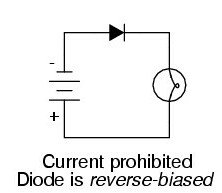
If the potential difference (voltage) of the battery is increased continuously in the reversed bias condition, a point is reached when the diode begins to conduct in the reverse direction. This phenomenon is called break down and the voltage at which this occurs is called the break down voltage. Regular diodes at break down get damaged and may not function as a diode again.
Special Types of Diode
Common diodes used in electronics include:
Light Emitting Diodes (LED): This type of diode produces light when current passes through them. We can consider them to be the light bulbs used in electricity, although they are not made from tungsten filaments as regular light bulbs but rather using semiconductors. The image and symbol of a LED is as shown below
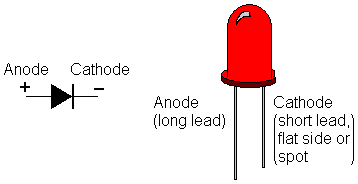
Zener Diode: Zener diodes unlike regular diodes don't get damaged when they are connected in reverse bias. Zener diodes can be reused even after breakdown. They behave like those characters in cartoons - even if they are shot dead, they just wake up and continue as if nothing really happened. The image and symbol of zener diode is shown below
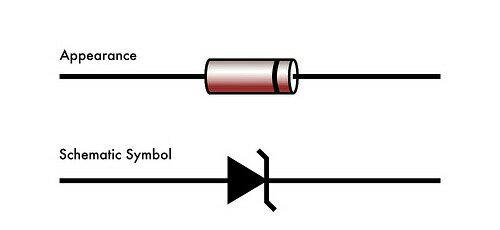
Photodiodes: Photodiodes converts light to electricity, this is achieved through photoelectric effect. Light rays fall on this type diodes producing holes and electrons which cause current to flow. The image and symbol of photodiode is shown below

Diodes are not restricted to the ones listed above. So many types of diodes exist, but those mentioned above are the most commonly used in electronics that I know of.
Well I guess this is it for now, I hope you found it interesting and educating. Until next time.
Reference:
Image Credit:
- Image 1 from pixabay.com
- Image 2 from DeZURIK
- Image 3 from khanacademy.org
- Image 4 from Electronics Post
- Image 5, 6 from book.huihoo.com
- Image 7 from rctrains.co.uk
- Image 8 from byjus.com
- Image 9 from RF Wireless World

greates ! good posting
Thanks alot for your feedback
This is fantastic. I am using more and more electronics in my teaching this has helped me to understand more of what is going on. Thank you :)
Am glad I was able to help
@originalworks
The @OriginalWorks bot has determined this post by @kenadis to be original material and upvoted(1.5%) it!
To call @OriginalWorks, simply reply to any post with @originalworks or !originalworks in your message!